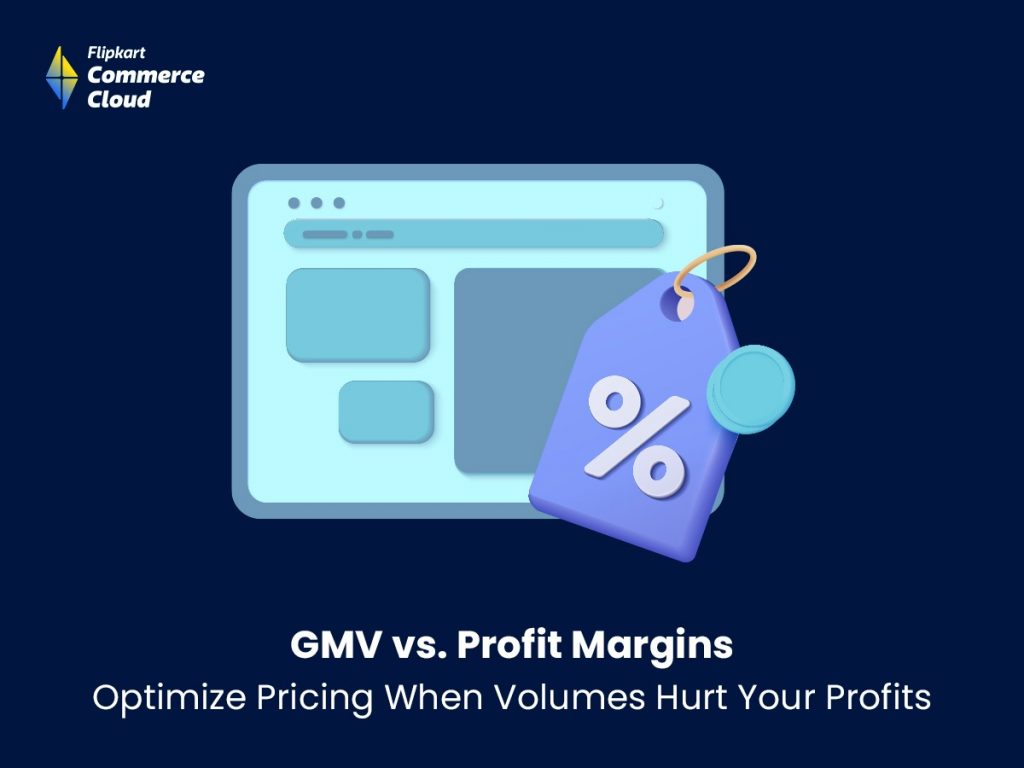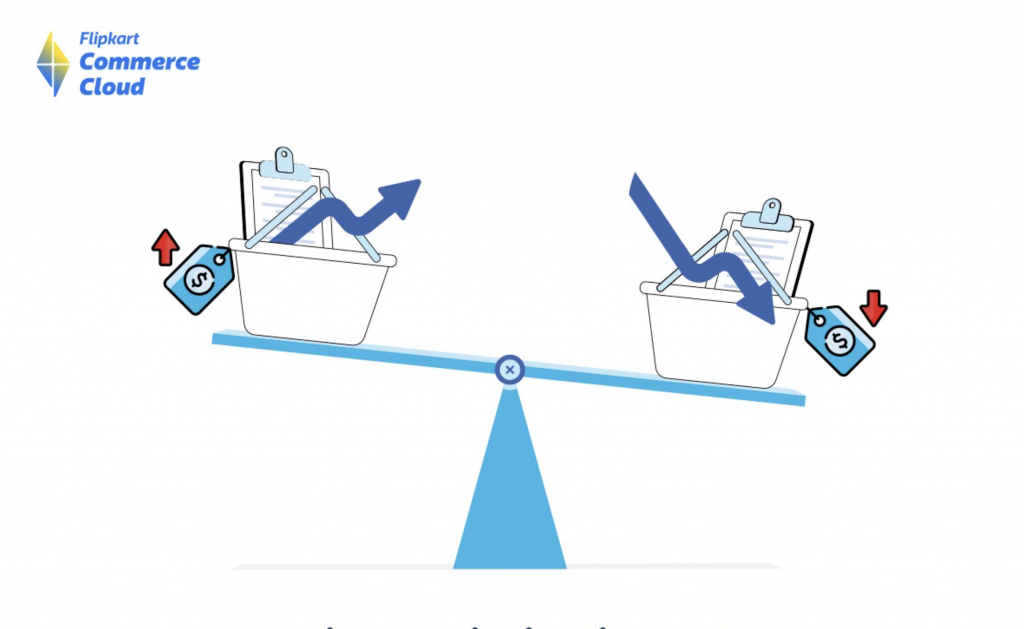Understanding Gross Merchandise Volume (GMV) and optimising pricing when the sales volume starts dipping can help maximise your business profits.
In this article, we’ll explore these topics so you can make more informed decisions about pricing for maximum profitability.
What are Gross Merchandise Volume (GMV) and Profit Margin in E-Commerce?
- Gross Merchandise Volume (GMV):
- Also called gross merchandise value, GMV refers to the total amount of sales made by a company over a specified period of time. It is generally measured quarterly or yearly
GMV is calculated using the following formula:
GMV = The Sales Price of Goods x The Number of Goods Sold
- Profit Margin:
- In the e-commerce industry, margins typically refer to the following:
- Gross Profit Margin Rate: It indicates if your business is operating at a profit or loss and is calculated using the following formula:
Gross Profit Margin Rate = [(Revenue – COGS)/Revenue] * 100
- Net Profit Margin Rate: It’s the ultimate indication of your business’s profitability and is calculated using the following formula:
Net Profit Margin = [(Revenue – COGS – Operating and Other Expenses – Interest – Taxes) / Revenue] * 100

Are There Any Ideal Profit Margins for Online Retailers?
According to the NYU Stern School of Business, e-commerce retailers witness, on average, 41.5% in gross margins and 7.3% in net margins. This is considered a decent e-commerce profit margin.
Nonetheless, when it comes to e-commerce, the profit margins also depend on several factors, including your product category and the size and scope of your online store, among others.
The Relationship between Sales Volume and Profit
Every business owner wants to maximise business profit while increasing sales volumes.
If you charge higher prices, your profit per sale will be higher. However, your overall sales volume decreases, affecting profits.
On the other hand, if your business charges lower prices, your sales volume may be higher, but profits may drop.
Optimising Pricing Strategies
Price is an essential contributor to your profit margins. Therefore, pricing strategies must be adjusted accordingly if GMV is taking a hit due to volumes dropping, pricing strategies must be adjusted accordingly.
Here are some strategies to optimise pricing when volumes hurt your profits:

Price is an essential contributor to your profit margins. Therefore, pricing strategies must be adjusted accordingly if GMV is taking a hit due to volumes dropping, pricing strategies must be adjusted accordingly. Here are some strategies to optimise pricing when volumes hurt your profits:
#1 Price Analysis: Check how your prices compare with your competitors regularly. Your volumes may drop because customers choose your competitors offering a better deal.
You can track the competition manually. However, this could be time-consuming. In addition, you may not be fast enough to match the rate of change in online pricing trends. Also, the changes may be irrelevant by the time you incorporate them.
An automated pricing tool may be a better solution to stay informed and keep up with the competition.
#2 In-depth Data Analysis: After watching your competitors and their prices, analysing the data will help you understand critical variables.
Leverage these insights to get ahead of the competition. For example, identify popular products where the more prominent players are less active in online sales. Then, grab the opportunity to attract new customers with suitable deals for those products, thereby boosting the volumes.
Pricing optimisation solutions use advanced algorithms to quickly analyse competitive prices and determine the best price for any product.
Likewise, machine learning capabilities built with advanced retail data facilitate higher performance and accuracy, helping you keep up with the competition and increase your GMV.
#3 Consumer Insights: If you price too high, people won’t buy. And if you go too low, you won’t make enough profit despite high volumes.
So it’s crucial to find a balance between the two, especially when entering a new market.
Many retailers either adopt the average price or their competitors’ price. But these don’t work in the long term since every business has unique circumstances related to costs, profit margins, and business goals.
Similarly, a pricing strategy that hinges on your costs can backfire, as shoppers constantly compare it to the other prices to decide if it’s suitable or not.
Gathering consumer insights allows you to analyse their buying based on region, consumption purpose, demography, etc. Adjust your prices accordingly.
#4 Dynamic Pricing: Dynamic pricing involves setting flexible product prices scalable to factors such as demand, supply, competition, etc.
If your volumes have dipped, it may be that you aren’t changing prices as efficiently as our competition. This may be why you aren’t attracting new customers or retaining the existing ones.
Manual dynamic pricing can also be prone to errors and discrepancies.
Automated pricing solutions can help you set up dynamic pricing rules for different products and services. This can help you preserve volumes without sacrificing margins and ensure that your prices align with the market.
#5 Price Point Testing: Different price points on a demand curve will yield different demand levels and profit margins. The volume, too, can vary.
Price tests help you establish the optimal pricing for your products to maximise profits. So you’ll know at what price points you gain the highest profits and volumes.
Conclusion
Pricing strategies should be optimised when volumes are hurting your profits.
Flipkart’s Pricing Optimisation solutions can help you optimise margins & revenues across diverse categories and channels.
Advanced machine learning capabilities, scale-tested algorithms, and other superior features enable the delivery of end-to-end solutions based on the latest trends.
When pricing strategies are optimised, you’ll notice that your margins start to grow, and your profits will improve in the long run.